Step-by-step guide to getting started on the world’s first decentralized writing platform.

If you’re an artist, musician, or content creator, the internet is filled with earning potential right now.
Digital art sales, via NFTs, have exploded in popularity, providing cash-strapped creators with millions of dollars overnight.
Now writers can join the fun too, with a new Web3 platform that allows you to generate money by converting your work into NFTs.
Welcome to Mirror, the world’s first decentralized writing platform
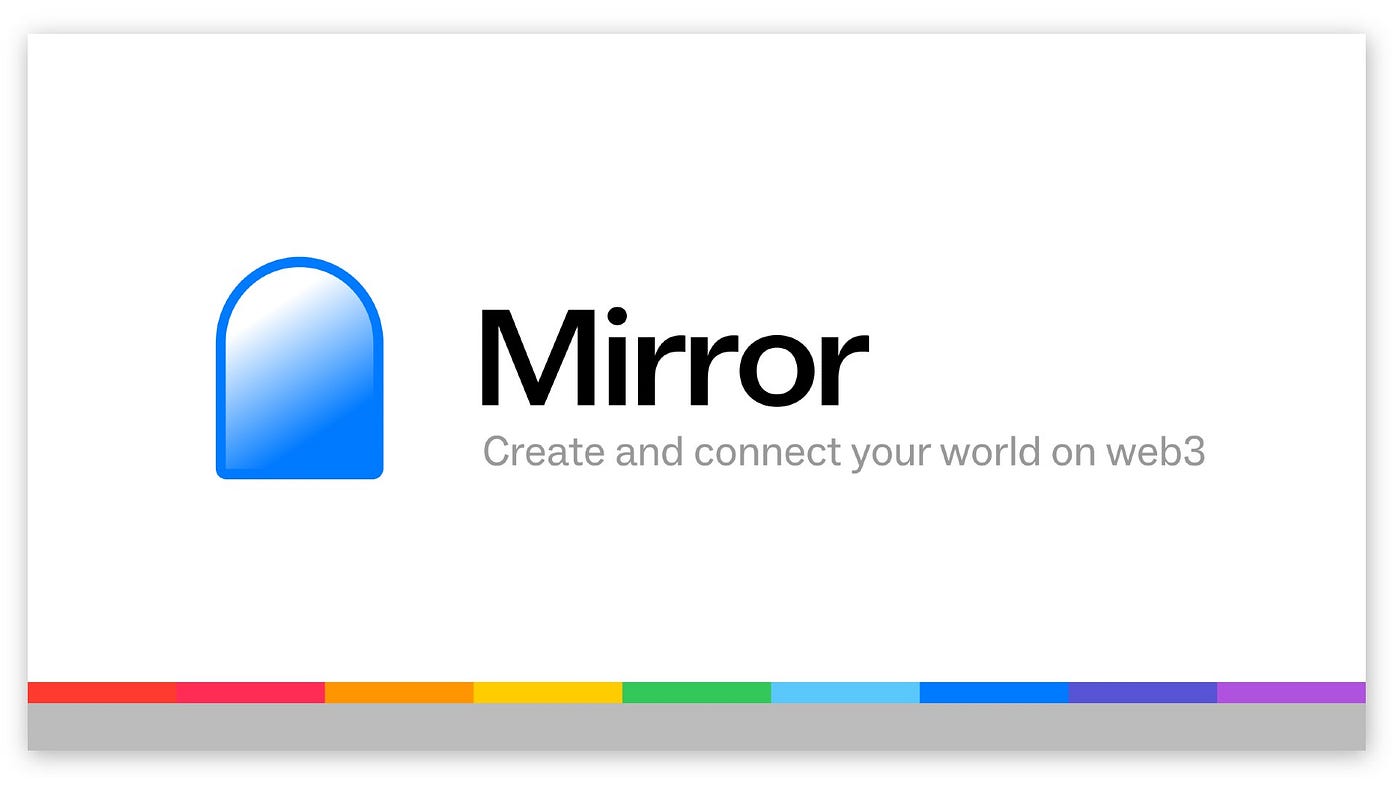
This is an introductory guide to the Mirror platform, meant for a non-technical audience. It’ll be most helpful for writers looking to learn about a new technology and make money from their work.
Before you begin, I suggest you review this Web3 Basics Guide to get familiar with terminology and principles. Knowing the basics will be a huge help to get you up and running on Mirror.
In this guide, you will learn:
- What is Mirror?
- What are the benefits of Mirror?
- How to get started on Mirror
- How to turn your writing into an NFT
Let’s get started. 🚀
What is Mirror?
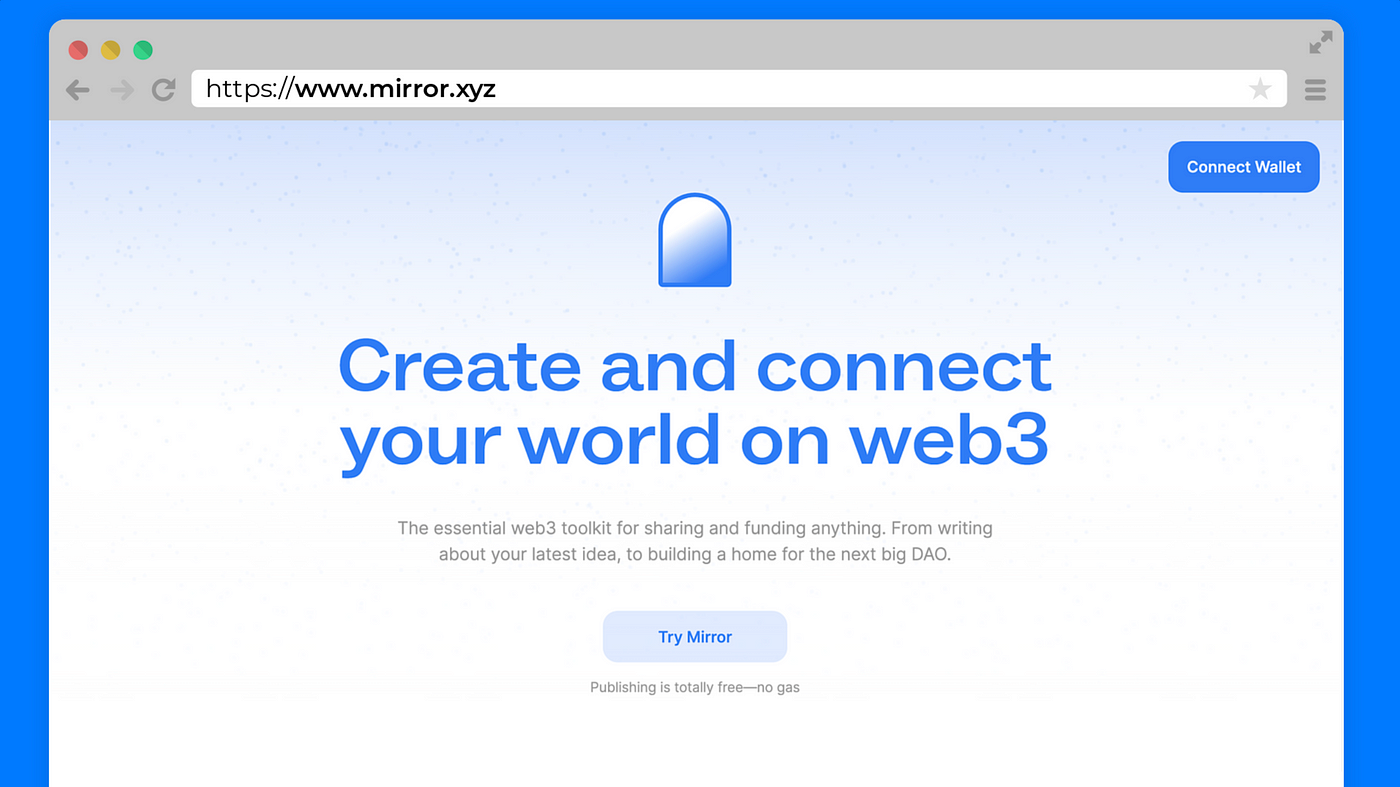
Mirror.xyz is a new publishing platform for writers. It’s a place for online content creators to write articles, earn money, and crowdfund their projects.
Similar to other publishing platforms like Medium and Substack, writers post articles and can earn income from their content.
But here’s how it’s different (Stick with me, it’s about to get jargony):
Mirror is a Web3 application
- It sits on the Ethereum blockchain
- Writers earn money in cryptocurrency
- Article collectors receive NFTs (non-fungible tokens)
- Publishing is 100% free, as Mirror does not have gas fees
🤷…
If you’re not familiar with these terms, that’s okay! Check out the links above to familiarize yourself with the concepts. Then continue reading this article.
Because Mirror uses Web3 technology, it’s described as a “decentralized” writing platform to help creators connect with their target audiences in a more direct and innovative way.
If you write online, Mirror may be a valuable platform to help you grow your audience and generate income.
⚠️ Before you continue, know this…All Web3 applications like Mirror are in very early stages of development and are considered highly experimental. Please do your research across multiple sources and proceed at your own risk.
What are the benefits of Mirror?
Before we get into the benefits, let’s talk about the problems Mirror is trying to solve. Why does a platform like Mirror exist at all?
At the broadest level, Mirror is attempting to solve problems creators have with current writing platforms. Let’s take a look.
Today’s writing platforms:
- ❌ It’s difficult to make money. Publishers take up to 50%+ of revenue. On Medium, only 6.4% of active writers earn over $100/month.
- ❌ Writers don’t own their content and can’t take their fans with them. When you post content, the platform you post on may own most or all of your content (have you read the terms & conditions?). Also, creators can’t take their fans with them. If you have a big following on Instagram, there’s no easy way to reach them outside of Instagram. You can’t export your Instagram following and contact them elsewhere.
- ❌ Publishing platforms make the rules. Today, companies like Meta/Google set all the rules. They choose who can share information on their platform and what can be said. These companies also have the power to change their policy, alter their algorithm, update their rules. The content creators have no say.
Mirror’s writing platform:
- ✅Writers keep 97.5% of profits. It’s completely free to publish articles on Mirror. If you choose your article to be sold as an NFT, Mirror only takes 2.5% for each transaction. You keep the rest. Currently, NFTs are the main way writers can earn money. This is expected to evolve into additional revenue streams in the future, such as advertising.
- ✅ Writers own their content. Have you ever read the Terms and Conditions of other writing platforms? Most likely, the corporation has some (or full!) ownership of your content. Not on Mirror. They make it clear that you own your content. Everything you publish is stored on the permaweb with Arweave (aka stored on a decentralized hard drive). Mirror guarantees personal ownership over your data and content.
- ✅Writers keep their fans. One challenge in the current Web2 publishing space is control over fans. You may have 10K followers on Medium. But what if Medium goes away? You’ve just lost 10K fans with no way to contact them. On Mirror, you know exactly who contributes to your projects and can easily communicate with them again on any other platform on the Ethereum blockchain.
- ✅ Writers are co-owners of the platform. Every contributor is a co-owner of the Mirror platform. Anyone can participate in the ‘project’ and vote on decisions. Their website states that “Mirror is the sum of its contributors, who are co-owners of the platform.”
How to get started on Mirror
As of October 2021, Mirror is open for anyone to write articles and share content. It does take a few steps to get set up, especially if you’re brand new to the Ethereum blockchain.
Once you’re set up and active on Ethereum, writing on Mirror is easy. It operates just like any of your favorite writing platforms. Clean and intuitive interface. Simple to write and share your ideas.
Let’s get you set up on Ethereum so you can activate your Mirror account.
1. Download a crypto wallet like MetaMask
A crypto wallet is a digital browser extension to store your cryptocurrency. Wallets are also how you’ll send and receive transactions on the Ethereum blockchain.
Download a wallet that works with Mirror, such as MetaMask (preferred), Coinbase Wallet, or Rainbow.
To start writing on Mirror, you won’t need to put any money in your wallet yet. But if you want to support other writers or turn your articles into NFTs, you will need to deposit funds into your wallet. You can learn how to do that here.
2. Connect your wallet to Mirror
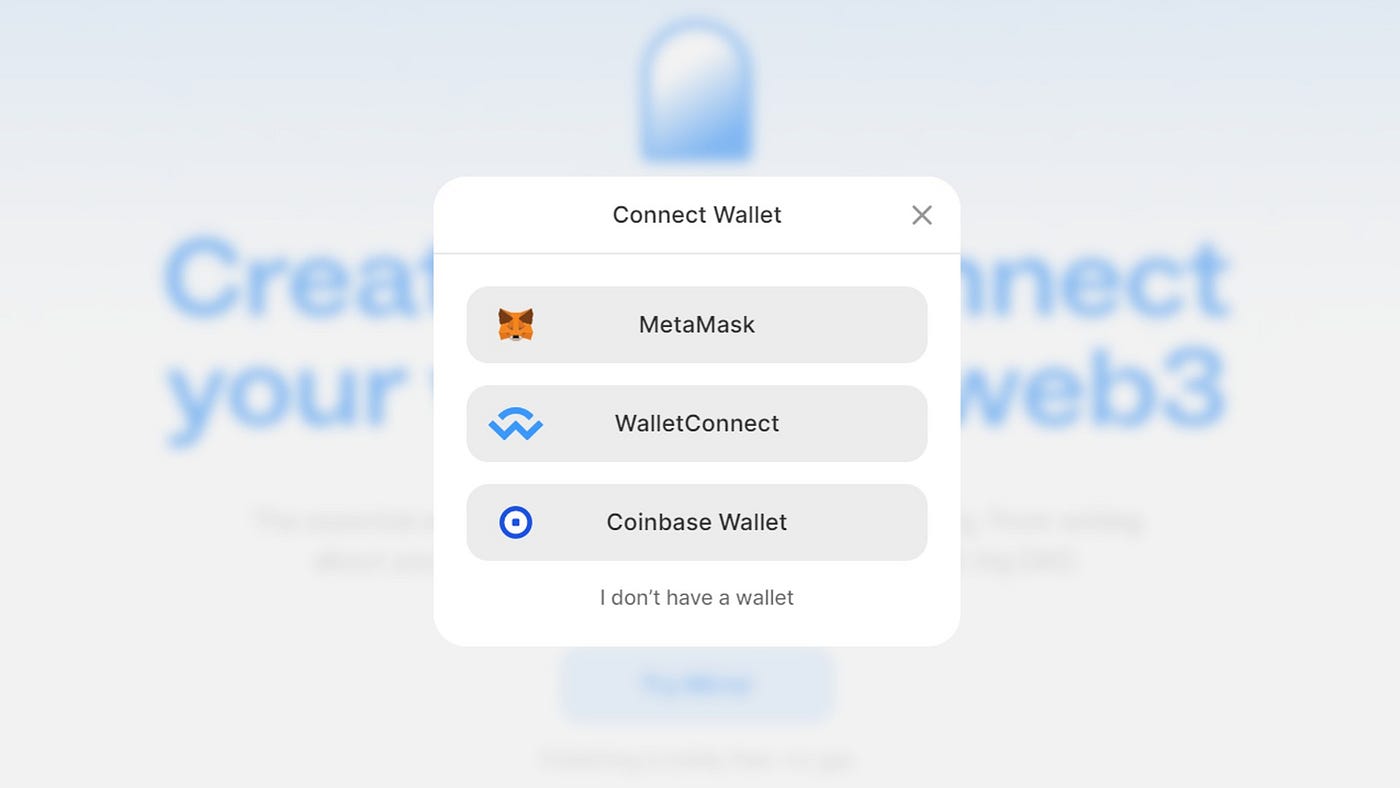
Once you’ve set up your wallet, you’ll need to connect it to Mirror. Go to mirror.xyz and select Connect Wallet. Then, follow the instructions on screen.
You won’t need to create a login and password, like many traditional websites. Web3 apps like Mirror connect directly to your wallet. Each time you come to the site, you’ll be automatically logged in.
3. Set up your profile
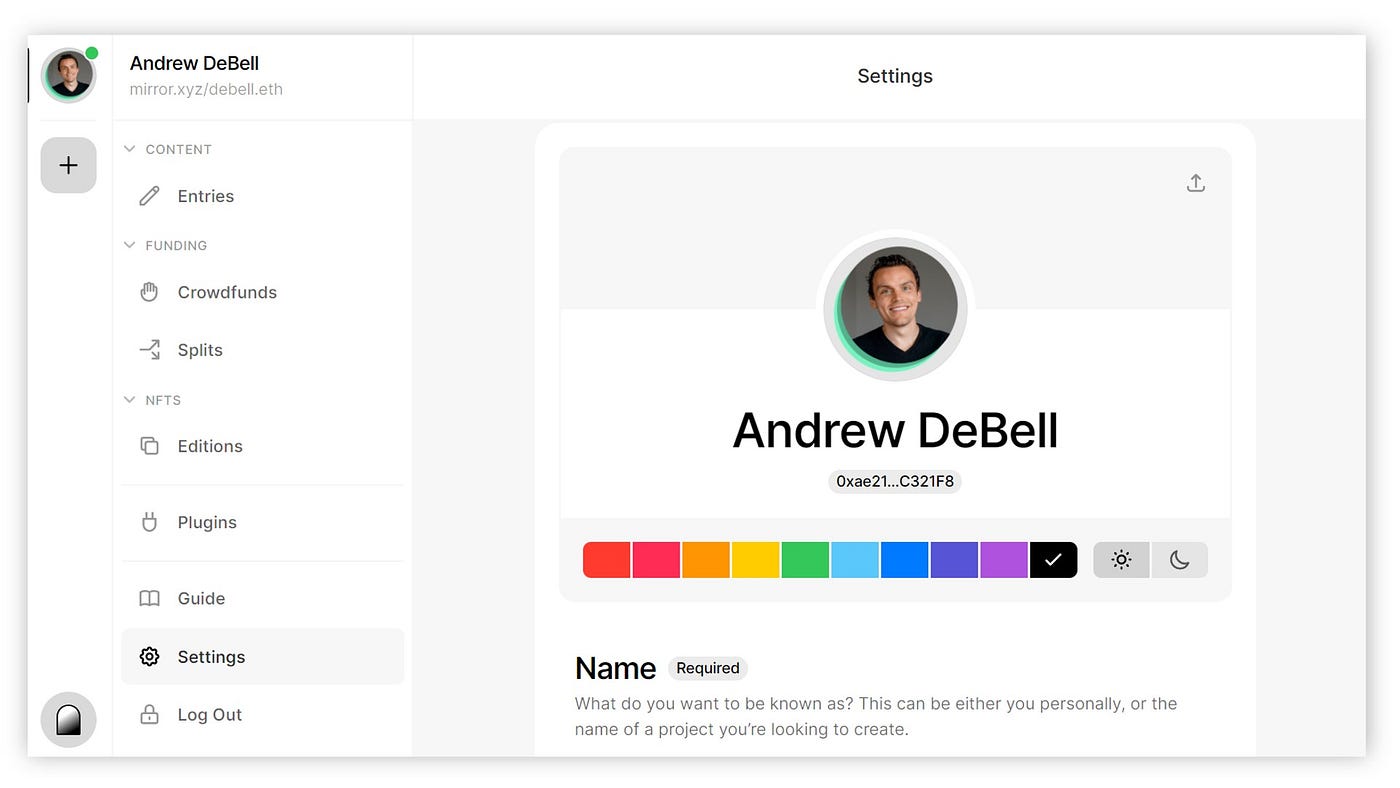
Go to settings, then upload a profile picture. Choose a color, add your name, Write a brief summary of who you are and what you write about.
Mirror doesn’t provide reader stats yet, but you can connect Google Analytics if you care about metrics. And you can also add a subscribe button URL to allow users to subscribe to your newsletter.
4. Start writing your first ‘Entry.’
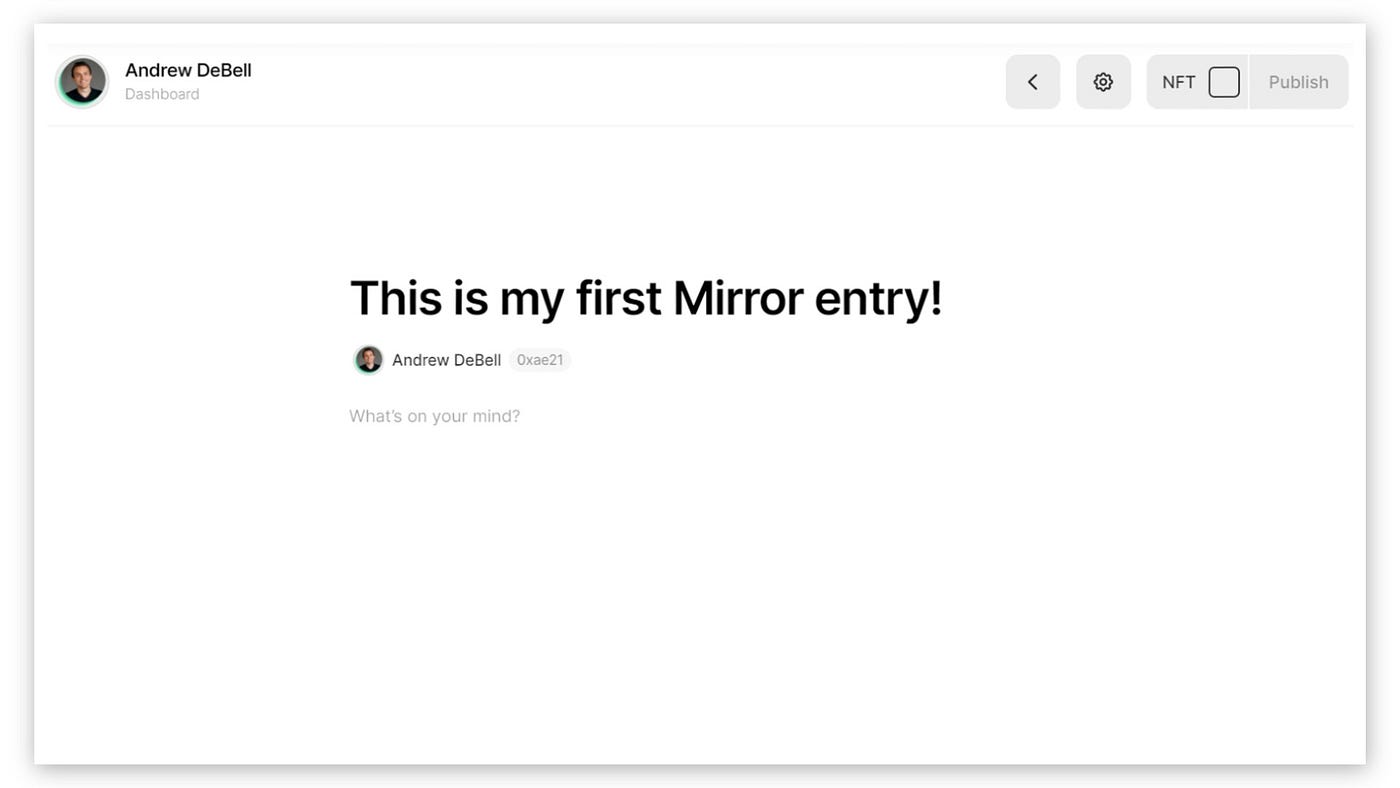
Now you’re ready to start writing. Articles in Mirror are called ‘Entries.’ You can start a new entry by going to the main dashboard, and selecting Create Entry.
This will open up a blank canvas to start your writing. You can highlight text to change text styles and add links. Or select a Block to create a header, upload an image, or create a code snippet.
When you’re all finished, select Publish at the top right. You can also turn your article into an NFT, which is coming up next.
How to turn your writing into an NFT
What’s an NFT again? It’s basically a digital collectible. NFTs allow you to make money from your writing by readers “collecting” your digital creation.
When your audience “collects” your article as an NFT, they are paying to own a small piece of your work. Your NFT will have its own unique digital code, so collectors can prove they are the original owners. If your article increases in value, owners will benefit from it.
Here’s how you can turn your writing into an NFT:
1. Deposit ETH into your crypto wallet
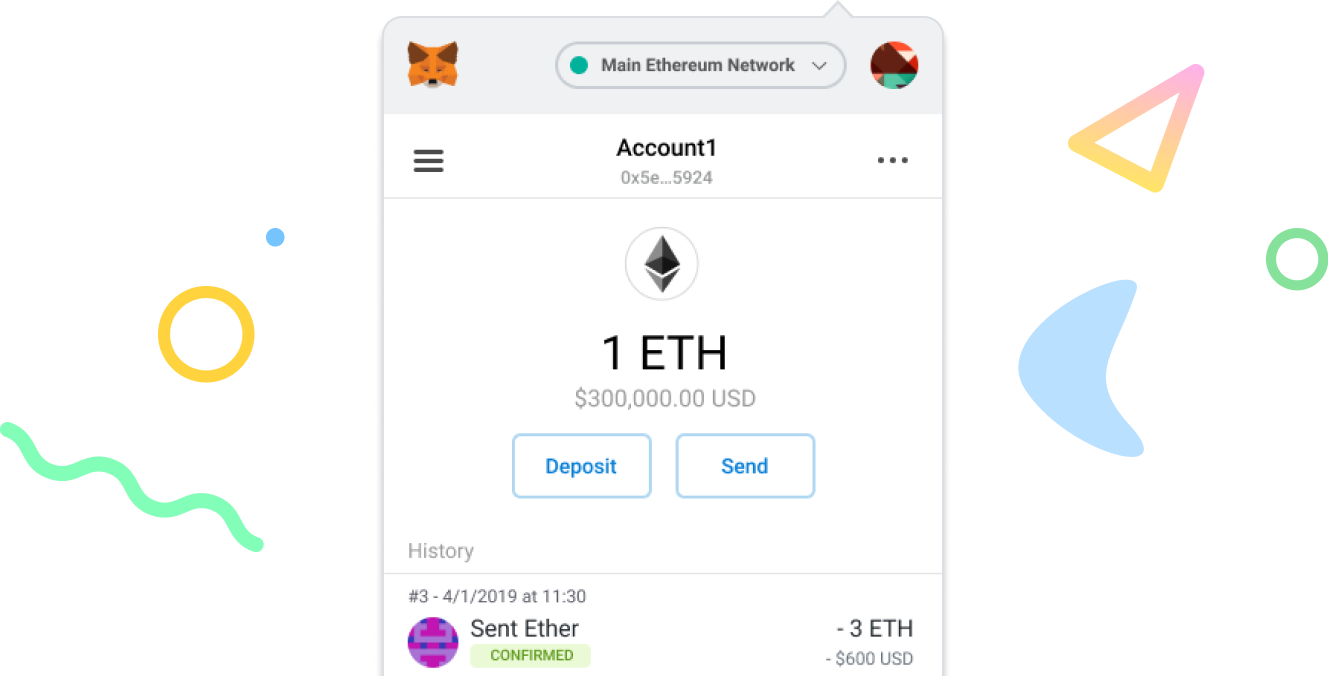
If you haven’t done so already, you’ll need to deposit ETH currency in your crypto wallet.
Why? Well, to perform any function on the Ethereum blockchain, gas fees must be paid for the effort required to verify a transaction. Think of this as a transaction fee.
At time of writing, gas fees on Ethereum are very high. It could cost you between $40-$200 just for a single transaction. The hope is that fees will decrease as the next stages of Ethereum are implemented.
To deposit ETH in your wallet, it requires a few steps. The easiest route is to purchase ETH in Coinbase, then transfer it to MetaMask. Here’s a tutorial to do that.
⚠️ Before you continue, it’s important you know what you’re getting into. Turning your work into NFTs is going to cost you money upfront. Blockchains and NFTs are all experimental technology right now. There is no guarantee you will make money. It’s fully up to you to decide what’s best for you and your financial position.
2. Write a high-quality article
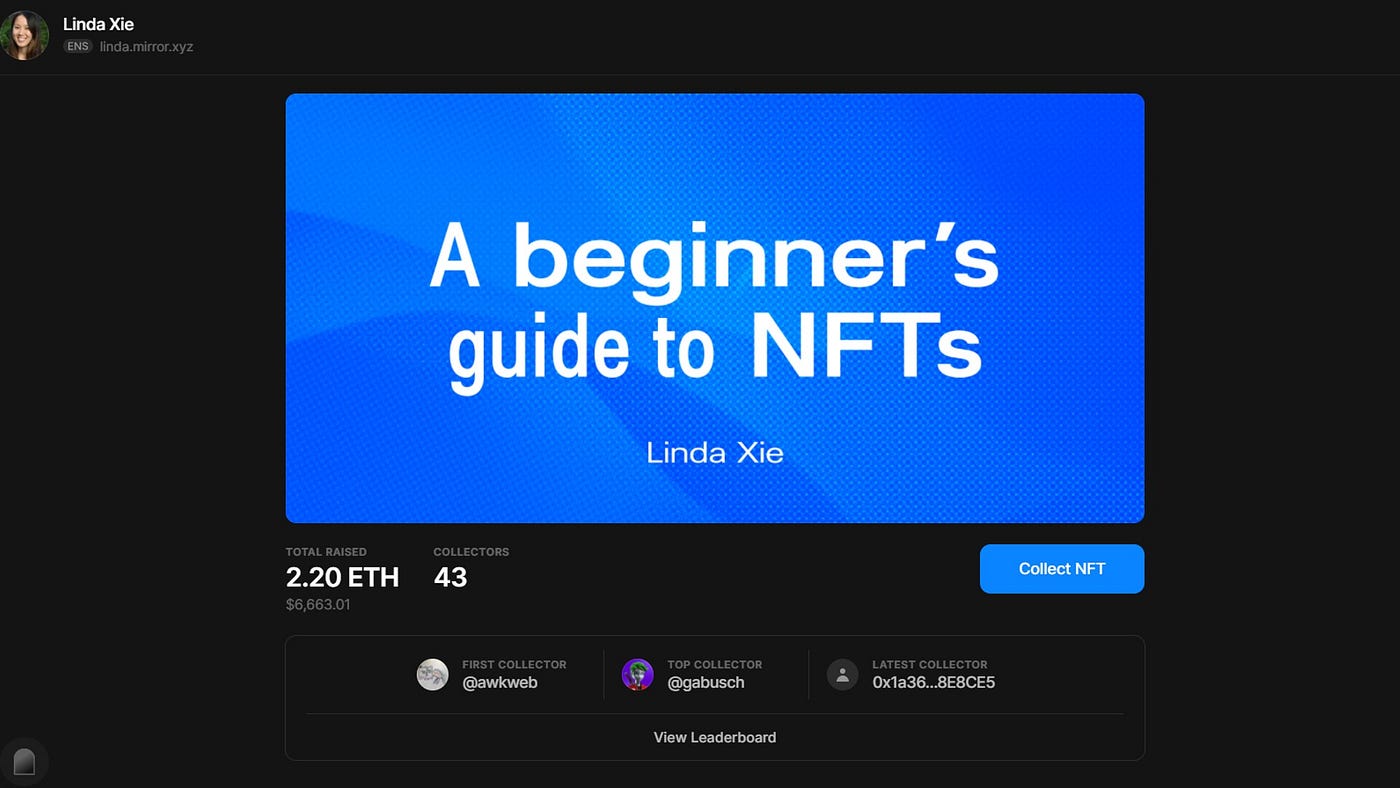
This article is of Mirror’s top performing NFT articles, written by Linda Xie
Not every article you write on Mirror needs to be an NFT. As you’re getting started, you should reserve NFTs for your highest quality work only. That’s because you’ll have to pay gas fees every time you mint a new NFT. So it’s best to start with just 1–2 articles and see how it goes.
Do your research and create a compelling piece of content that provides value to your audience. For an NFT collector to support your content, they need to see the value right away.
3. Publish your article as an NFT
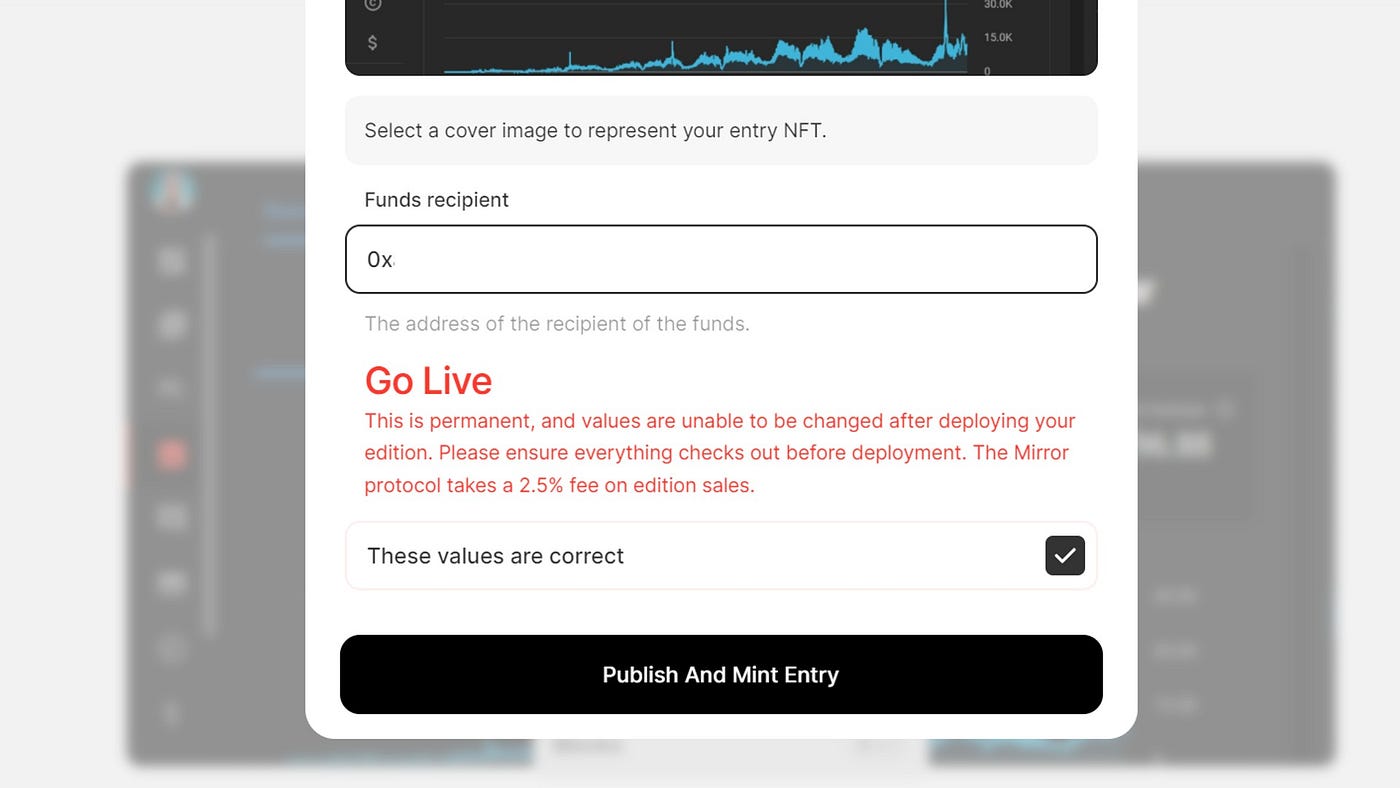
You have ETH in your wallet. You have a compelling article ready for primetime. Now you’re ready to publish and mint!
At the top right corner, next to the Publish button, you’ll see a checkbox for NFT. Select this checkbox. Then click Publish.
On this screen (shown above), make sure to enter your Ethereum public key. This will let Mirror know which wallet to distribute funds to, should anyone collect your article as an NFT.
You can find your public key by opening your wallet and copying your public key to your clipboard. It should start with 0x. Paste your public key into the box.
Before you click submit, know the terms. Mirror takes 2.5% of every transaction. Mirror does not charge you to mint an NFT. But they will take a cut every time someone collects your article. Once it looks good, select Submit.
4. Complete the transaction
You might want to wait to mint your NFT until gas fees are low
You’re not done quite yet. In order for your NFT to mint, you have to complete a transaction on the Ethereum blockchain.
Here’s where it will cost you money. MetaMask pops up and asks you to confirm the transaction. Notice the gas fees. Depending on the network, the gas fees could be anywhere from $30-$200. If the gas fees are super high, this source suggests performing transactions between 1:00am-3:00am UTC or 9:00-11:00 pm UTC.
Once you’ve confirmed your transaction, and it goes through, then boom, you’ve got yourself a freshly minted NFT. Congrats! Share it with your network on your social platform of choice.
Phew. That was a lot of work. Was it worth it?
I‘m honestly not sure! But at least you tried something new and got to explore how a new technology works.
Don’t expect to become a millionaire overnight. Those people you read about are outliers. It will always be difficult to build an audience and make money from your creations, whether you’re in Web2, Web3, or Web467.
As long as you view it as an opportunity to learn more about a new tool and technology, you’ll come away with fresh insight about how to apply it to your own work.
Hope you found this valuable to get started. You can learn more about Mirror and all the platform’s capabilities here at their Mirror guide.
Now, go create something! 📝